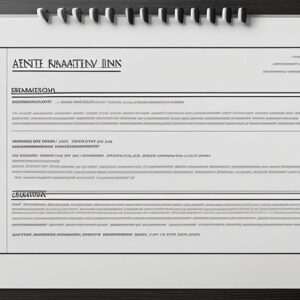In this article, we are creating a CRUD application with angularFire2 and angular, This module basically provides direct access to the Firebase database, and by using angular and angularFire2, you can create a complete Fullstack application.
Setup Environment
Install Node.js on your machine first, after this, you can install Angular CLI globally using the following command
npm install -g @angular/cli
Create a New angularFire2 and angular App
Now open the terminal and run the below commands to create an angularFire2 and angular project and move inside the created project.
ng new angular-fire-crud-app
cd angular-fire-crud-appInstall AngularFire2
Time to Install AngularFire2 and Firebase by running the following command
npm install firebase @angular/fire
Setup Firebase Project
Visit this link https://firebase.google.com/ and create a Firebase project and get the configuration details from the Firebase console.
Configure AngularFire in Your App
Open the src/environments/environment.ts file and add your Firebase configuration
export const environment = {
production: false,
firebaseConfig: {
apiKey: 'YOUR_API_KEY',
authDomain: 'YOUR_AUTH_DOMAIN',
projectId: 'YOUR_PROJECT_ID',
storageBucket: 'YOUR_STORAGE_BUCKET',
messagingSenderId: 'YOUR_MESSAGING_SENDER_ID',
appId: 'YOUR_APP_ID'
}
};
Initialize AngularFire in AppModule
Open the src/app/app.module.ts file and import the necessary modules
import { NgModule } from '@angular/core';
import { BrowserModule } from '@angular/platform-browser';
import { AngularFireModule } from '@angular/fire';
import { AngularFireDatabaseModule } from '@angular/fire/database';
import { environment } from '../environments/environment';
import { AppComponent } from './app.component';
@NgModule({
declarations: [AppComponent],
imports: [
BrowserModule,
AngularFireModule.initializeApp(environment.firebaseConfig),
AngularFireDatabaseModule
],
providers: [],
bootstrap: [AppComponent]
})
export class AppModule {}
Create Item Model
Create an item.model.ts file in the src/app directory
export interface Item {
id?: string;
name: string;
description: string;
}
Create CRUD Service
Create a crud.service.ts file in the src/app directory
import { Injectable } from '@angular/core';
import { AngularFireDatabase, AngularFireList } from '@angular/fire/database';
import { Item } from './item.model';
@Injectable({
providedIn: 'root'
})
export class CrudService {
private itemsRef: AngularFireList<Item>;
constructor(private db: AngularFireDatabase) {
this.itemsRef = db.list('/items');
}
getItems(): AngularFireList<Item> {
return this.itemsRef;
}
addItem(item: Item): void {
this.itemsRef.push(item);
}
updateItem(key: string, item: Item): void {
this.itemsRef.update(key, item);
}
deleteItem(key: string): void {
this.itemsRef.remove(key);
}
}
Create Components
Create components for an item listing, adding, editing, and deleting items using the Angular CLI
ng generate component item-list
ng generate component item-add
ng generate component item-edit
ng generate component item-delete
Implement Components
Modify the components to implement the CRUD functionality using the CrudService:
item-list.component.ts
// Import necessary modules and services
@Component({
selector: 'app-item-list',
templateUrl: './item-list.component.html',
styleUrls: ['./item-list.component.css']
})
export class ItemListComponent implements OnInit {
items: Item[];
constructor(private crudService: CrudService) {}
ngOnInit(): void {
this.crudService.getItems().valueChanges().subscribe((items: Item[]) => {
this.items = items;
});
}
}
item-add.component.ts
// Import necessary modules and services
@Component({
selector: 'app-item-add',
templateUrl: './item-add.component.html',
styleUrls: ['./item-add.component.css']
})
export class ItemAddComponent {
newItem: Item = { name: '', description: '' };
constructor(private crudService: CrudService) {}
addItem(): void {
this.crudService.addItem(this.newItem);
this.newItem = { name: '', description: '' };
}
}
item-edit.component.ts
// Import necessary modules and services
@Component({
selector: 'app-item-edit',
templateUrl: './item-edit.component.html',
styleUrls: ['./item-edit.component.css']
})
export class ItemEditComponent {
selectedItem: Item;
constructor(private crudService: CrudService) {}
editItem(item: Item): void {
this.selectedItem = { ...item };
}
updateItem(): void {
this.crudService.updateItem(this.selectedItem.id, this.selectedItem);
this.selectedItem = null;
}
}
item-delete.component.ts
// Import necessary modules and services
@Component({
selector: 'app-item-delete',
templateUrl: './item-delete.component.html',
styleUrls: ['./item-delete.component.css']
})
export class ItemDeleteComponent {
deleteItem(itemKey: string): void {
this.crudService.deleteItem(itemKey);
}
}
Create Templates and Styles
Create templates and style files for each component like item-list, item-add, item-edit, and item-delete.
Create Routes
Configure the routes in the src/app/app-routing.module.ts file
import { NgModule } from '@angular/core';
import { RouterModule, Routes } from '@angular/router';
import { ItemListComponent } from './item-list/item-list.component';
import { ItemAddComponent } from './item-add/item-add.component';
import { ItemEditComponent } from './item-edit/item-edit.component';
import { ItemDeleteComponent } from './item-delete/item-delete.component';
const routes: Routes = [
{ path: '', component: ItemListComponent },
{ path: 'add', component: ItemAddComponent },
{ path: 'edit/:id', component: ItemEditComponent },
{ path: 'delete/:id', component: ItemDeleteComponent }
];
@NgModule({
imports: [RouterModule.forRoot(routes)],
exports: [RouterModule]
})
export class AppRoutingModule {}
Add Routing to App Component
Add the router-outlet directive in the src/app/app.component.html file to display different components based on the route
<router-outlet></router-outlet>
Run the App
Time to start the development server using the following command
ng serve
Now, this link on the browser http://localhost:4200 to see your angularFire2 and angular CRUD app in action!
Feel free to comment. Happy Coding 🙂








1 Comment